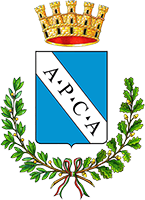
Text edited by Andrea Dario Manzi Fé.
Expert in hunting gastronomy on all types of game. He has currently written four books on hunting, including two on recipes with roe deer and woodcock. He has been a contributor to the gastronomic columns of the magazines “Diana” and “Beccacce che passione”. He is committed to “re-qualifying the hunter” in the eyes of the public through the three words that make hunting a noble art: Ethics, Aesthetics and Flavours.
In the village of Amelia, near Terni, the piccionaccio (wood pigeon) hunting with nets was practised in the distant Middle Ages. At that time, the wood pigeon was called piccionaccio or palomba in the area. The nets clicked into place and would snap shut on the wood pigeons, which were attracted to the ground by grain scattered between the nets. There were several nets placed at the same time under the holm oaks, each controlled by a rope which, when pulled, would set them off. The hunter waited until there were enough wood pigeons under the net, then he would snap the net, thus securing a large quantity of wood pigeons with the aim of selling them. The recipe for “Piccionaccio alla Leccarda” was born at the same time. The Leccarda is a local invention, a half-cylinder of terracotta with four small supports which, placed under the spit with the embers underneath and filled with seasoning, collected the fat that dripped from the cooking of the wood pigeons and at the same time infused them with the cooking vapours of the seasonings.
Ingredients
Wood pigeons, thin bacon, olives, capers, bay leaf, red wine, olive oil, onion, salt, pepper.
For the interior of the wood pigeons once cooked, leccarda sauce at the end of cooking, tomato paste.
Preparation
Clean the wood pigeons, leaving the heart, liver and lungs inside (remove only the stomach and intestines), insert two olives, salt, pepper, a slice of bacon in each wood pigeon and close with a bay leaf. Wrap the wood pigeons in thin bacon and tie them up with string, placing a few bay leaves on top. Thread the wood pigeons onto the spit and place them in front of a live fire in the fireplace. Underneath, place the leccarda pan with a mixture of olives, capers, bay leaves, olive oil, onion pieces and red wine. The pan is placed under the spit-roasted wood pigeons so that the cooking fat drips in. Under the dripping pan, place and, if necessary, add embers so that the mixture evaporates and softens the wood pigeons. Every twenty minutes, moisten the wood pigeons with the leccarda pan sauce, for about three hours until the wood pigeons are tender to the fork. At this point, the wood pigeons should be cut in two and each half placed on a toasted slice of bread and kept warm. The inside of the wood pigeons is sautéed in a pan with the mixture left in the leccarda pan together with a little tomato paste. When this sauce is ready, it can be used to dress the pasta. After the pasta, serve the toasted bread with the wood pigeons kept warm.


